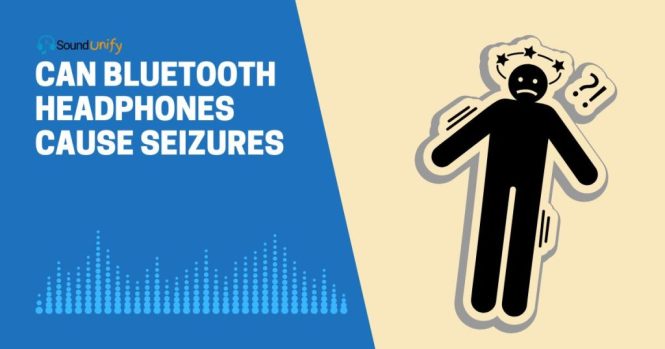

Does using gadgets cause seizures? This critical question affects many individuals concerned about the potential link between technology use and seizures. Understanding the relationship between electronic devices and seizures is crucial for both those who experience them and those looking to prevent them. This comprehensive guide delves into the complex relationship between gadgets and seizures, exploring potential triggers and offering practical precautions for mitigating risks. We’ll examine the science behind seizures, look at different types of gadgets, and explain how to reduce the risk of triggering an episode. Finally, we’ll offer expert advice and actionable steps you can take to stay safe and informed.
Understanding Seizures and Their Potential Triggers
What are Seizures?
Seizures are sudden, uncontrolled electrical disturbances in the brain, manifesting in various physical and behavioral symptoms. These disturbances can stem from various underlying conditions, including epilepsy, brain trauma, or metabolic imbalances. Understanding the various types of seizures and their potential triggers is key to effective management. For instance, some individuals are more susceptible to seizure activity when exposed to flashing lights or loud sounds. This understanding is crucial for creating a safe environment.
Identifying Potential Triggers:
Certain environmental factors can act as triggers for seizures, such as flashing lights or loud noises. Exposure to these triggers can cause an electrical storm within the brain. These can vary greatly, including sudden changes in light intensity or patterns, and rapid sound changes and transitions. The triggers can also be specific to the individual, making it difficult to predict with complete accuracy. In children and adolescents, the risk factors can include environmental triggers and genetics.
The Role of Gadgets in Potential Seizures
Flashing Lights and Visual Stimuli:
Many gadgets, particularly smartphones and tablets, emit high-frequency visual stimuli through flashing screens. This can act as a trigger for individuals sensitive to such visuals. Extended use of these devices, especially during times of increased susceptibility to seizures, could heighten the risk of a seizure. The prevalence of visual stimulation in modern devices is something worth considering in the modern digital era. Different devices emit different levels of flashing light, so it is important to be aware of individual limits, and take necessary precautions.
Impact of Audio Stimuli and Frequencies
Sound Effects and Notifications:
Modern gadgets are increasingly incorporating diverse audio stimuli for notifications, sounds, and games. For some individuals, this can overload sensory perception and increase the possibility of seizures. Certain sound patterns or frequencies can provoke a seizure in vulnerable individuals. For example, some video games and apps employ very dynamic sound designs that are difficult to adjust. It is important to be cautious about the auditory input that is received from gadgets and technology in general.
Individual Susceptibility and Factors to Consider
Pre-existing Conditions:
Individuals with pre-existing conditions like epilepsy are at higher risk of experiencing seizures. If you have a history of seizures, it is important to pay close attention to possible triggers in your environment, including the use of electronic devices. Consulting with a healthcare provider is strongly recommended for personalized guidance, considering individual factors, such as genetic predispositions and health history.
Sleep Deprivation and Stress:
Adequate sleep and stress management are crucial for maintaining overall health and stability, potentially reducing the likelihood of seizure triggers and events. In turn, insufficient rest or heightened stress can have a direct impact on a person’s susceptibility to seizures. Addressing stress and ensuring proper sleep routines are vital when managing risks.
Practical Steps to Mitigate Risks
Adjusting Screen Brightness and Settings:
Lowering screen brightness can lessen the impact of visual stimuli. Consider adjusting screen time limits to avoid overuse, and choose settings that minimize flashing. Also, consider using screen-reading software or tools to adapt the visual display and improve ease of use.
Using Headphones or Adjusting Audio Settings:
Adjusting audio levels and use of headphones is crucial in situations where sounds are problematic, reducing exposure to loud noises from gadgets and technology. Adjusting settings like screen brightness and reducing background sounds can mitigate the risk, in turn providing a safer environment.
Expert Advice and Recommendations
Consultation with a Neurologist:
For tailored advice on managing seizure risk associated with gadget use, consulting a qualified neurologist is crucial. This approach will help to determine if any existing medical conditions or factors could contribute to seizures, which can in turn inform individualized strategies for mitigating potential risks and provide a safer way forward.
Monitoring and Logging Usage Patterns:
Tracking your gadget usage patterns and noting potential triggers can help identify patterns and allow you to understand your personal thresholds and limits.
Seeking Support and Resources
Educational Materials and Online Communities:
Seek out reputable online resources for detailed information on seizures, their triggers, and management strategies. Joining online communities of affected individuals can provide valuable support and sharing of experiences.
Preventive Measures and Self-Care
Creating a Supportive Environment:
Minimize potential triggers in your environment by adjusting lighting, controlling noise levels, and maintaining a healthy sleep schedule. This will reduce the impact of flashing lights or sounds from the gadgets used.
The Importance of Regular Health Checkups
Early Detection and Intervention:
Regular health checkups with medical professionals can help with early identification of potential conditions, informing appropriate strategies to minimize risks and complications related to using electronic devices or gadgets. Monitoring your well-being closely can reduce the incidence and frequency of seizures, which may in turn lead to a longer and healthier life span. In order to maintain optimal wellness, maintaining regular medical checkups and health management strategies is vital. This helps monitor health trends closely over time.
In conclusion, while gadgets aren’t inherently seizure-inducing, certain factors can increase the risk. Understanding these factors—like individual susceptibility, flashing lights, and high-frequency sounds—is crucial to minimizing potential triggers. For detailed advice tailored to your needs, consider scheduling a consultation with a qualified neurologist. This will ensure proactive measures are taken to safeguard your well-being and make technology enjoyable, safe and accessible.